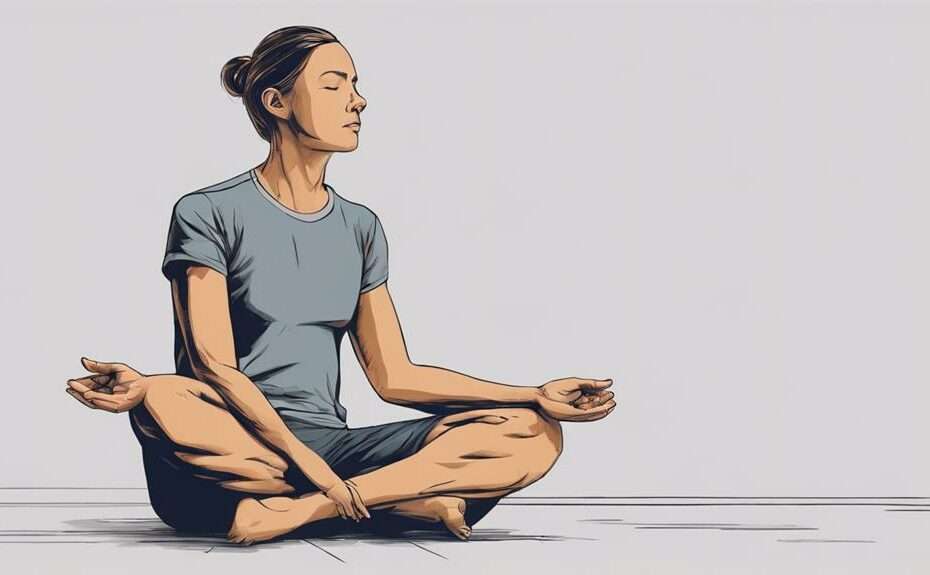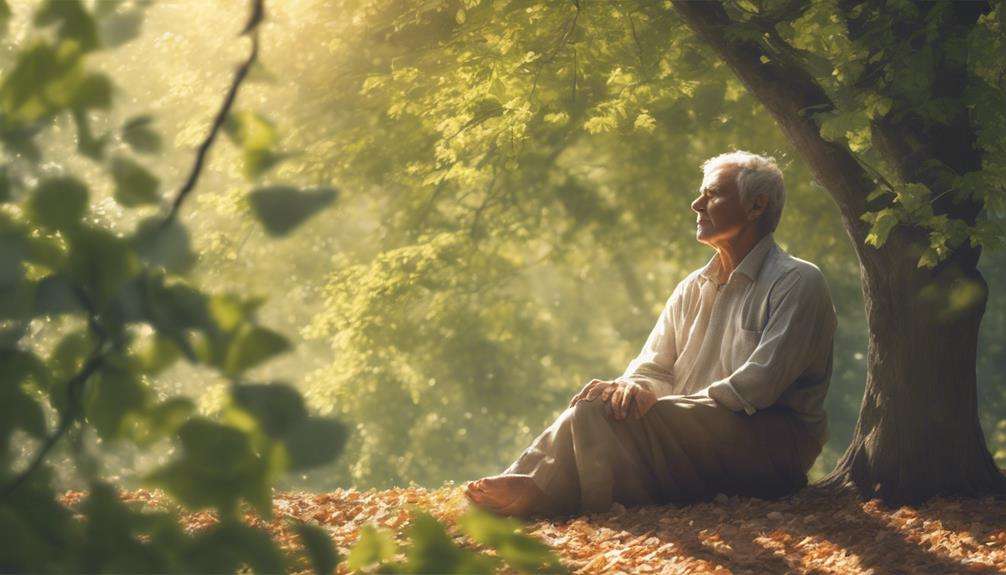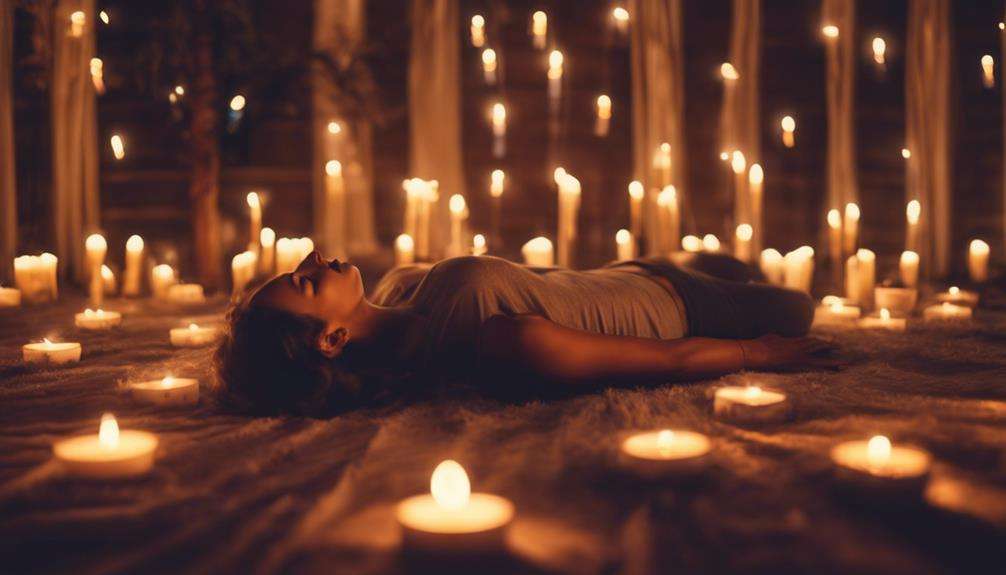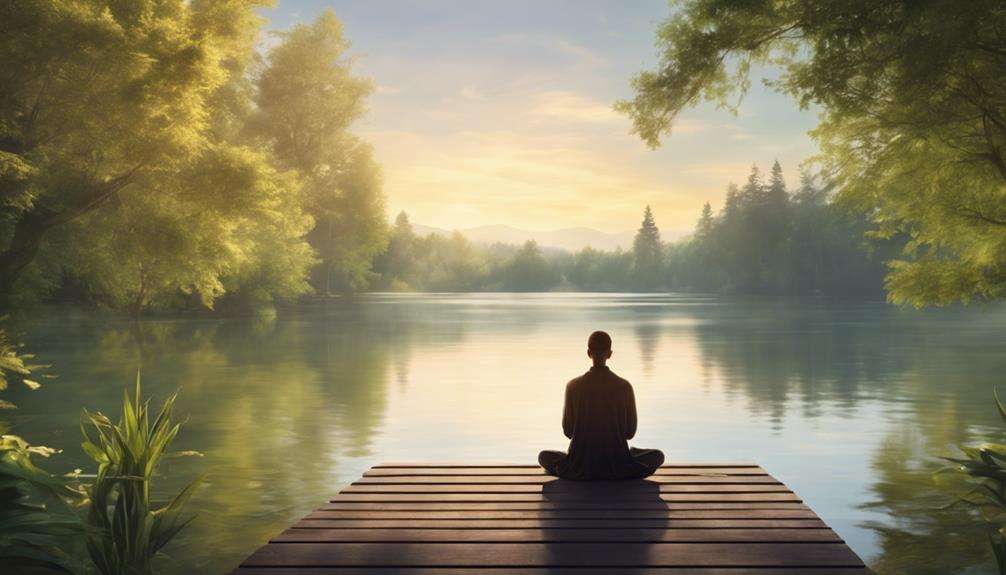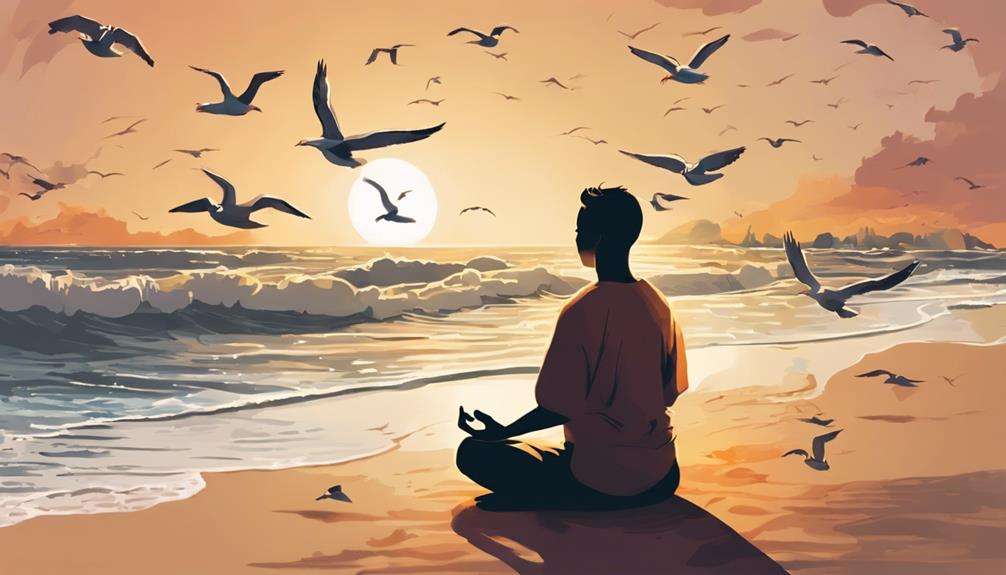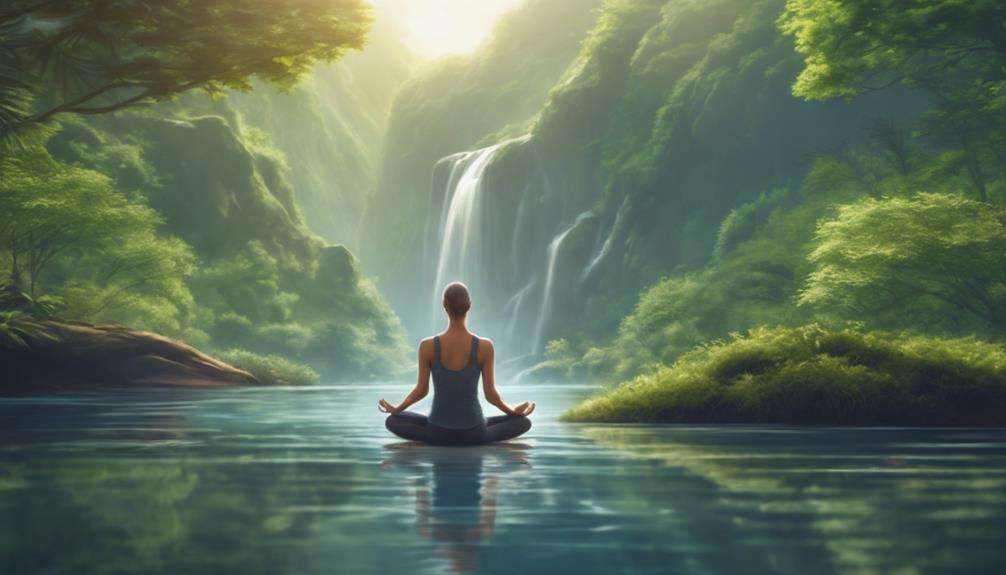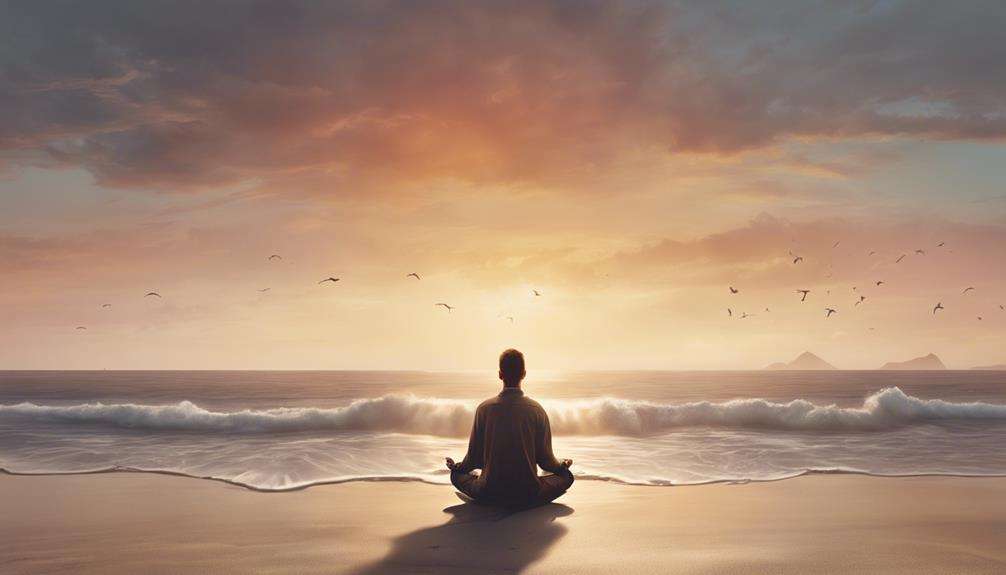You've probably heard that unicorns, rainbows, and magical yoga poses are the keys to releasing tension. While we can't promise you unicorns, we can guide you through some yoga poses that might just do the trick.
From the soothing Corpse Pose to the calming Legs Up the Wall Pose, these postures offer a pathway to relaxation and stress relief. But there's more to uncover beyond the surface of these poses – a deeper understanding that could transform your approach to finding peace and serenity.
Key Takeaways
- Stick Pose and Corpse Pose are effective for releasing physical and mental tension.
- Reclining Bound Angle and Legs Up the Wall poses promote relaxation and reduce stress.
- Rag Doll Pose releases tension in the spine and enhances flexibility.
- Incorporating yoga into your routine reduces stress, enhances flexibility, and improves overall well-being.
Yoga Poses for Releasing Tension: Stick Pose (Yastikasana)
To release tension effectively, start by practicing the yoga pose known as Stick Pose (Yastikasana). This pose involves a simple seated forward bend that targets your spine and hamstrings, helping to alleviate stress and promote relaxation in your body. By engaging in Stick Pose, you can experience improvements in your posture and flexibility while reducing stiffness in your back and shoulders.
The gentle elongation of your spine and the stretching of your legs in this pose work together to release both physical and mental tension, providing a sense of ease and calmness.
As you practice Stick Pose regularly, you'll find that it aids in alleviating tightness in your body, offering a pathway to relaxation and increased flexibility. Allow yourself to focus on the alignment of your head, arms, and knees during this pose to fully benefit from its stress-relieving properties. Embrace the soothing nature of Stick Pose as you commence on your journey towards a more relaxed and flexible body.
Yoga Poses for Releasing Tension: Corpse Pose (Savasana)
For a deeply relaxing experience that releases both physical and mental tension, lie flat on your back with legs extended and arms at your sides in Corpse Pose (Savasana).
Savasana, also known as Corpse Pose, is a powerful yoga posture designed to help you relax, unwind, and release tension. By practicing Savasana, you can calm your mind, rejuvenate your body, and experience deep relaxation. This pose is perfect for reducing stress and integrating the benefits of your yoga practice.
As you settle into Corpse Pose, focus on your breath and allow your muscles to soften, promoting a state of tranquility and peace. Savasana is often recommended as a concluding pose in yoga sessions to prepare you for a state of profound relaxation.
Yoga Poses for Releasing Tension: Reclining Bound Angle With Bolster (Supta Baddha Konasana)
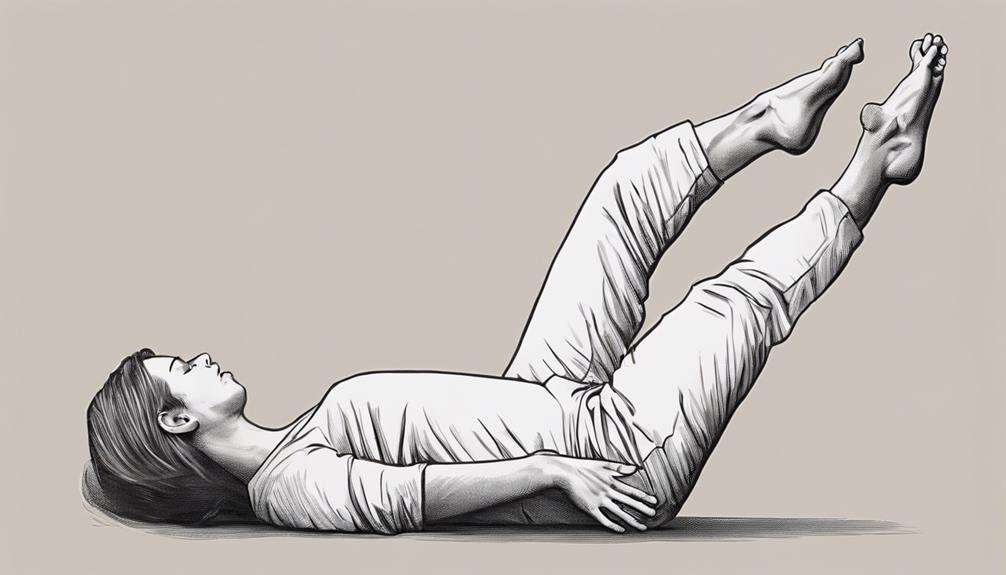
When you settle into Reclining Bound Angle Pose with a bolster, you'll feel the gentle opening in your hips and the comforting support it provides your back. This pose aids in releasing tension stored in your inner thighs and groins, providing a sense of physical and emotional release.
Embrace the added comfort and relaxation a bolster brings, allowing yourself to unwind and restore balance in both body and mind.
Supportive Bolster Benefits
With supportive bolsters, you can experience enhanced comfort and relaxation in yoga poses, particularly in Reclining Bound Angle Pose for releasing tension in the hips and lower back.
Bolsters provide gentle support, aiding in relaxation and allowing the body to surrender into the pose fully. This support promotes deep breathing, fostering a sense of calmness during practice.
Utilizing bolsters in yoga sessions enhances the effectiveness of restorative poses, making them ideal for releasing tension and stress. When practicing Reclining Bound Angle Pose with a bolster, you can feel a soothing release in the hips and lower back, helping you unwind and alleviate any built-up tension in these areas.
Gentle Hip Opening
Enhance your yoga practice and experience deep relaxation by incorporating Reclining Bound Angle With Bolster (Supta Baddha Konasana) for gentle hip-opening and tension release in your hips and lower back.
This pose involves lying down with the soles of your feet together and knees dropping open, supported by a bolster. By practicing Supta Baddha Konasana, you stretch your inner thighs, groins, and hip flexors, promoting relaxation and reducing tightness in your hip area.
The bolster support provides a restorative experience, aiding in deep relaxation and tension release. Regular practice can enhance hip flexibility, alleviate discomfort, and bring a sense of ease to your body.
Embrace this pose to nurture your hips and lower back, fostering a more relaxed and flexible body.
Yoga Poses for Releasing Tension: Legs Up the Wall Pose (Viparita Karani)
When practicing Legs Up the Wall Pose (Viparita Karani), you'll discover a multitude of benefits for releasing tension and restoring balance in your body.
This pose not only helps to relieve stress and fatigue but also supports improved blood circulation throughout your legs and lower back.
Benefits of Viparita Karani
Discover the soothing benefits of Viparita Karani, a restorative yoga pose also known as Legs Up the Wall Pose. This pose is renowned for its stress-relieving benefits, helping reduce tension in the body.
By facilitating lymph drainage and improving blood circulation, Viparita Karani promotes overall well-being. It can also calm the mind, reduce anxiety, and prepare you for restful sleep when practiced before bedtime.
The gentle inversion of this pose allows for the reversal of blood flow, aiding in releasing tension and promoting relaxation. Incorporating Legs Up the Wall Pose into your routine can contribute significantly to your physical and mental wellness, offering a peaceful way to unwind and de-stress.
How to Practice
To practice the restorative yoga pose Viparita Karani, find a comfortable spot near a wall where you can lie on your back with your legs extended upwards. This gentle inversion allows gravity to work its magic, releasing tension in your legs, lower back, and hips.
As you hold this pose, focus on deep breathing to enhance relaxation and promote blood circulation and lymphatic drainage. By taking the time for Legs Up the Wall Pose, you give your body a chance to unwind, reducing fatigue and stress.
Regular practice can improve your overall well-being, helping you sleep better, reduce leg swelling, and achieve a sense of calmness and rejuvenation. Embrace this pose for a moment of self-care and rejuvenation.
Precautions and Modifications
If you're looking to practice Legs Up the Wall Pose (Viparita Karani) for releasing tension, it's important to guarantee precautions and modifications to take into account a safe and comfortable experience.
Here are some tips to help you make the most of this pose:
- Support Your Hips: Use a folded blanket or bolster under your hips for added support, especially if you feel any discomfort in the lower back.
- Listen to Your Body: Pay attention to how your legs, lower back, and hips feel during the pose, and adjust as needed to prevent any strain.
- Focus on Circulation: Allow the pose to improve circulation, aiding in reducing leg fatigue and swelling.
- Promote Well-Being: Embrace the calming benefits of Viparita Karani to alleviate symptoms of anxiety and insomnia, enhancing your overall well-being.
Yoga Poses for Releasing Tension: Rag Doll Pose (Uttanasana Variation)
For a deep release of tension in your spine and neck, try practicing the Rag Doll Pose (Uttanasana Variation) in yoga.
Stand with your feet hip-width apart, then gently fold forward at the waist, allowing your hands to hold onto opposite elbows. This pose utilizes gravity to stretch your back, shoulders, and hamstrings, promoting relaxation and reducing stress.
Swaying gently from side to side in Rag Doll Pose can help release tension in your shoulders and upper back, enhancing flexibility and relieving tightness. Not only does this pose improve posture and reduce stiffness in the spine, but it also promotes a sense of ease and lightness in your body.
Additionally, Rag Doll Pose aids in calming your mind, enhancing blood circulation to the brain, and fostering mental clarity by reducing feelings of anxiety or overwhelm.
Practice this pose regularly to enjoy its benefits of tension release and relaxation.
Yoga Poses for Releasing Tension: One-Legged Seated Forward Bend (Janu Shirasasana)
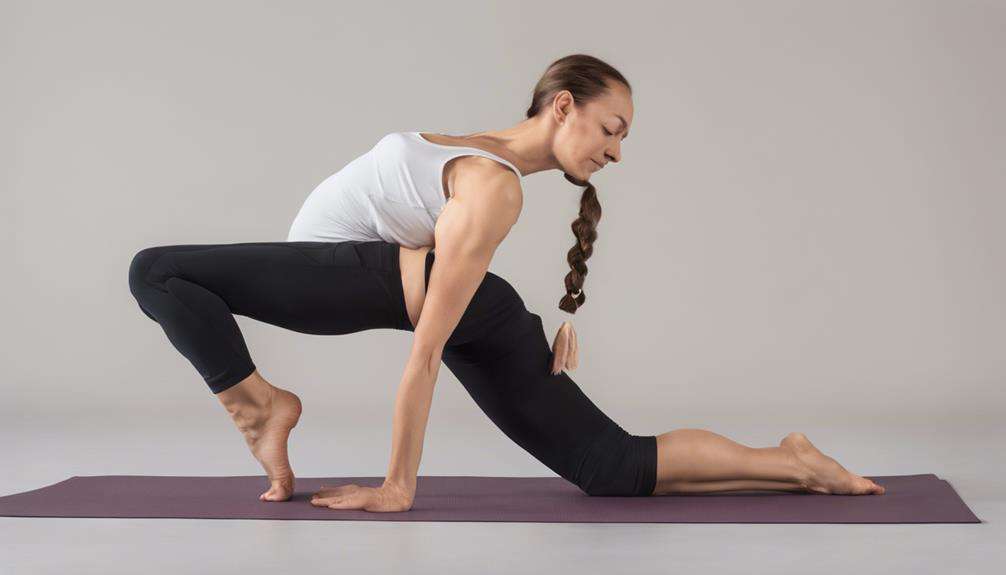
Stretching out one leg in front of you, Janu Shirasasana, also known as One-Legged Seated Forward Bend, targets the hamstrings, lower back, and groins to release tension and improve flexibility. This pose offers a multitude of benefits that can help you in various ways:
- By gently stretching the hamstrings and lower back, Janu Shirasasana relieves tension in these areas, promoting relaxation and comfort.
- The stretch provided to the groins helps improve flexibility in the hip area, allowing for better range of motion and reduced stiffness.
- Calming the mind and reducing anxiety, this pose creates a sense of tranquility that can alleviate stress and promote mental well-being.
- Janu Shirasasana's ability to reduce fatigue while providing a gentle stretch to the back body makes it an effective posture for releasing tension and rejuvenating both the body and mind.
Incorporating One-Legged Seated Forward Bend into your routine can contribute significantly to your overall sense of ease and relaxation.
Yoga Poses for Releasing Tension: Revolved Abdomen Pose (Jathara Parivartanasana)
To release tension in your spine and abdomen effectively, consider practicing the Revolved Abdomen Pose (Jathara Parivartanasana).
This yoga pose involves lying on your back and twisting to stretch the back muscles, hips, and shoulders, promoting relaxation and reducing stiffness. By gently twisting your torso in Jathara Parivartanasana, you can relieve lower back pain and enhance flexibility in the spine.
Additionally, this pose aids in digestion, massages internal organs, and improves spinal mobility. Regular practice of the Revolved Abdomen Pose can help release tension, improve digestion, and promote an overall sense of well-being.
When you incorporate this pose into your yoga routine, you're actively taking steps to care for your body and mind. Embrace the benefits of Jathara Parivartanasana to enhance your physical and mental well-being.
Yoga Poses for Releasing Tension: Incorporating Yoga Into Your Routine
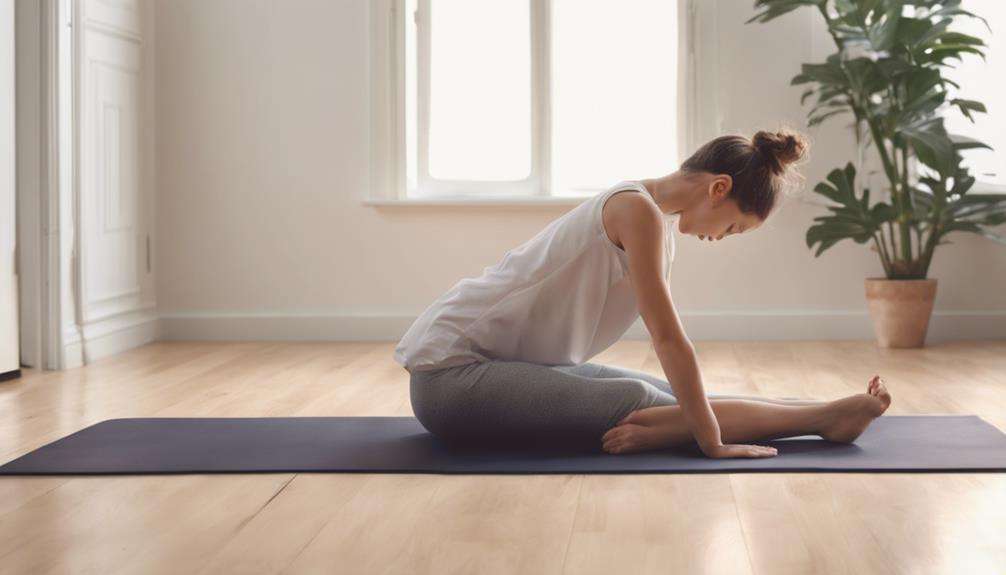
Incorporate yoga poses like Child's Pose, Corpse Pose, and Bridge Pose into your routine to effectively release tension and reduce stress. These poses aren't just physical exercises; they're powerful tools to help relax your body, calm your mind, and improve your overall well-being.
Here are four ways these poses can benefit you:
- Release Tension: By practicing these poses regularly, you can release tightness in your muscles, especially in areas like your back, shoulders, and hips.
- Reduce Stress: Taking a few moments each day to hold these poses allows you to unwind, quiet your mind, and let go of the stress accumulated throughout the day.
- Improve Flexibility: Engaging in these yoga poses helps enhance your flexibility, making your body feel more agile and free.
- Enhance Relaxation Responses: Incorporating these poses into your daily routine trains your body to respond better to relaxation cues, allowing you to de-stress more effectively.
Frequently Asked Questions
How Can I Get Immediate Relief From Tension?
To get immediate relief from tension, try focusing on your breath, practicing mindful meditation, doing progressive relaxation techniques, deep stretching, self-massage, guided imagery, enjoying hot baths, stimulating acupressure points, using essential oils, and exploring music therapy.
Which Asana Helps to Release Tension?
When tension weighs heavy, remember Child's Pose. This gentle stretch eases your back, shoulders, and neck. Let the soothing embrace of Balasana release stress, stretch muscles, and calm your mind. Take a breath, find peace.
What Is a Good Release of Tension?
To release tension effectively, try incorporating breathing exercises, progressive relaxation, and stretching techniques. These practices can help you connect your mind and body, promoting muscle relaxation, stress management, and a soothing relaxation response.
What Type of Yoga Is Best for Stress Relief?
For stress relief, consider restorative yoga with gentle stretching and deep breathing. Yin yoga uses passive poses and meditation techniques. Hatha yoga involves slow movement and relaxation techniques. These practices enhance stress management and mind-body connection.
Conclusion
As you incorporate these tension-releasing yoga poses into your routine, remember to listen to your body and make any necessary modifications for comfort.
By practicing deep breathing techniques and holding these poses, you can promote relaxation and reduce stress effectively.
Remember, Rome wasn't built in a day, so be patient with yourself and trust the process of restoring balance to your mind and body through these calming postures.
Keep breathing and keep stretching, you've got this!
